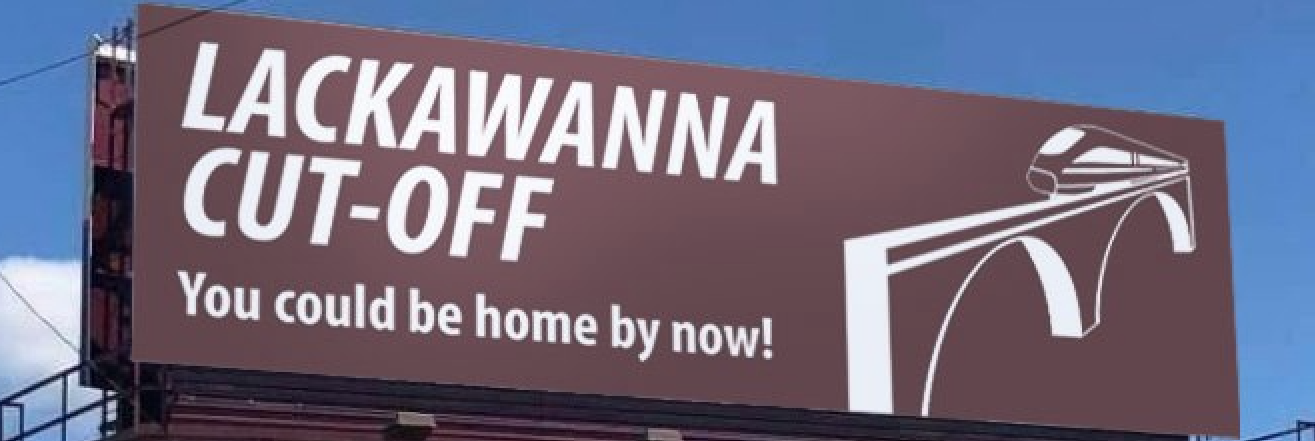The DL&W was one of the most profitable corporations in the U.S. when it built the Cut-Off. That profitability declined sharply after World War II, leading to the 1960 merger with the Erie Railroad, a company that, unlike the Lackawanna, had been in and out of bankruptcy over the years. The DL&W single-tracked the Cut-Off in 1958 in anticipation of the Erie merger. The westbound track was removed, leaving a four-mile (6.4 km) passing siding at Greendell and shorter sidings at Port Morris and Slateford. After the merger, most freight traffic shifted to the Erie’s mainline through Port Jervis, New York. With the cessation of passenger service in 1970, the Cut-Off became relatively quiet for several years. In 1972, the CNJ abandoned operations in Pennsylvania, causing through freights to be run daily between Elizabeth, New Jersey, and Scranton, using the Cut-Off and the CNJ’s High Bridge Branch. (This arrangement with the CNJ would end on April 1, 1976, with the creation of Conrail). As such, when Penn Central closed its Maybrook, NY yard in 1970, and its ex-New York, New Haven and Hartford Railroad Poughkeepsie Bridge burned on May 8, 1974, the original reason for using the “Erie Side” suddenly no longer existed. As a result, the EL looked to upgrade the “Scranton Side”, and by 1974 nearly all EL freights had been re-routed to the Scranton Division via the Cut-Off. The Scranton Side was also already in better physical shape since it had seen much less use than the Erie Side since the merger.
After Conrail took over rail operations, existing labor contracts kept EL’s freight schedule largely unchanged. This was deceiving, given what we know was about to happen. Even so, the new railroad’s maintenance-of-way department replaced many rotted ties, returning the Cut-Off to better physical condition than it had been in years. Nevertheless, Conrail’s management had a completely different sub rosa strategy and began quietly shifting freight traffic to other routes, later justifying this by citing the grades over the Pocono Mountains and EL’s early-1960s unwise severing of the original Boonton Line near Paterson, New Jersey (for Interstate 80) as reasons. As such, Conrail ran its final through freights via the Cut-Off on November 16, 1978, and two days later used it to move a light engine from Croxton Yard to Scranton, making that the next-to-last rail movement over the complete route. In early January 1979, the line was placed out of service and Port Morris Tower was closed. Routine maintenance on the line ceased, and the signal system was shut off. (Reportedly, Conrail wasn’t satisfied with just shutting off the signal system on the Cut-Off, but actually paid workers to vandalize—essentially sabotage—the signal system by ripping out wires and leaving signal sheds unlocked where other vandals could continue the work, lending credence to the belief that Conrail was ruthlessly hostile to any future use of the Cut-Off.) Scranton-Slateford freights in Pennsylvania continued running until 1980, when coal deliveries to the Metropolitan Edison power plant in Portland, Pennsylvania, shifted from the Scranton Division to the former Bangor & Portland Railway.
